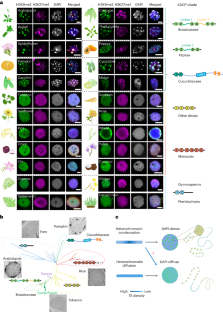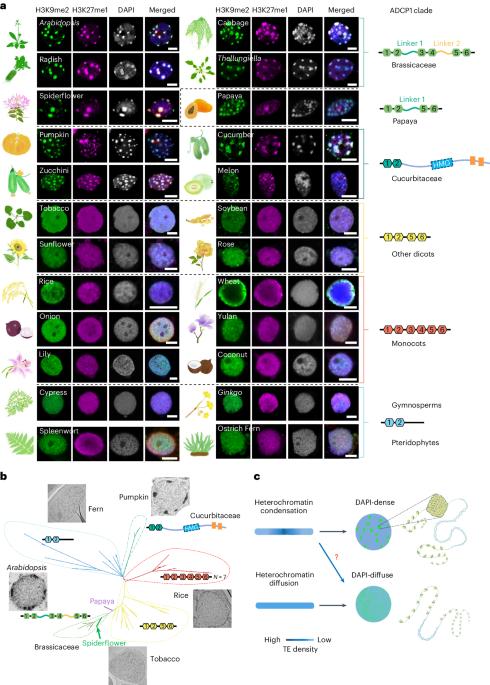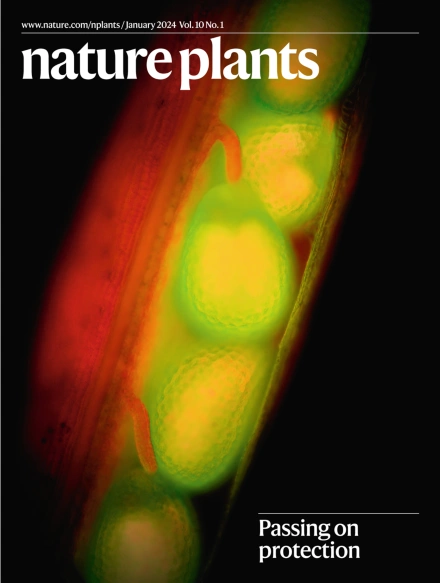进化异染色质凝聚划定了植物染色中心形成和逆转录转座子沉默的界限
IF 15.8
1区 生物学
Q1 PLANT SCIENCES
引用次数: 0
摘要
异染色质凝聚体(染色质中心)对于维持异染色质的沉默至关重要。因此,令人费解的是,不同植物物种的染色中心存在差异。在这里,我们揭示了植物异染色质蛋白 ADCP1 的变异通过相分离赋予了染色中心形成的多样性。ADCP1 与高迁移率基团蛋白 HMGA 发生物理作用形成复合物,并通过多价相互作用介导异染色质的凝聚。在进化过程中,ADCP1同源物中内在无序区(IDR)的缺失导致多种植物中没有明显的染色中心形成,而含有IDR的ADCP1与HMGA的引入促进了异染色质的凝聚和逆转录质子的沉默。此外,葫芦科植物进化出了一种含 IDR 的 ADCP1 和 HMGA 嵌合体,能显著促进染色中心的形成。总之,我们的研究揭示了异染色质包装和反转座子沉默的相分离共同进化机制。本文章由计算机程序翻译,如有差异,请以英文原文为准。


Evolutional heterochromatin condensation delineates chromocenter formation and retrotransposon silencing in plants
Heterochromatic condensates (chromocenters) are critical for maintaining the silencing of heterochromatin. It is therefore puzzling that the presence of chromocenters is variable across plant species. Here we reveal that variations in the plant heterochromatin protein ADCP1 confer a diversity in chromocenter formation via phase separation. ADCP1 physically interacts with the high mobility group protein HMGA to form a complex and mediates heterochromatin condensation by multivalent interactions. The loss of intrinsically disordered regions (IDRs) in ADCP1 homologues during evolution has led to the absence of prominent chromocenter formation in various plant species, and introduction of IDR-containing ADCP1 with HMGA promotes heterochromatin condensation and retrotransposon silencing. Moreover, plants in the Cucurbitaceae group have evolved an IDR-containing chimaera of ADCP1 and HMGA, which remarkably enables formation of chromocenters. Together, our work uncovers a coevolved mechanism of phase separation in packing heterochromatin and silencing retrotransposons. The researchers have uncovered that the phase separation ability of plant heterochromatin protein ADCP1 variants defines the formation of heterochromatic condensates (chromocenters) in different plant species.
求助全文
通过发布文献求助,成功后即可免费获取论文全文。
去求助
来源期刊

Nature Plants
PLANT SCIENCES-
CiteScore
25.30
自引率
2.20%
发文量
196
期刊介绍:
Nature Plants is an online-only, monthly journal publishing the best research on plants — from their evolution, development, metabolism and environmental interactions to their societal significance.
 求助内容:
求助内容: 应助结果提醒方式:
应助结果提醒方式:


